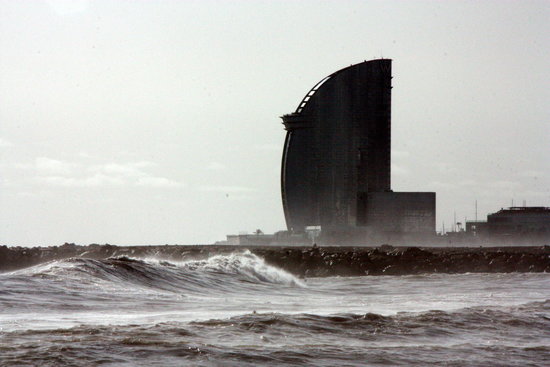20 million people could abandon Mediterranean coast by 2100 due to rising sea levels
Scientific report warns of flood risk to coastal structures, including airports, roads and railways

Up to 20 million people in the Mediterranean region could be permanently displaced due to sea-level rise by 2100, according to a report published by climate scientists on Monday.
Coastal structures including roads, trains and airports are also at risk, as stated in the Special Report on Climate and Environmental Coastal Risks in the Mediterranean by MedECC (Mediterranean Experts on Climate and Environmental Change).
Sea levels have risen by an average of 2.8mm a year over the last three decades but could rise by up to one meter by the end of the 21st century (relative to 1995–2014), according to the special report presented at the COP29 climate change conference in Baku, Azerbaijan.
The Mediterranean coast is one of the world's regions most likely to experience "severe flooding" caused by rising sea levels, scientists say. This is set to worsen with climate change, becoming 10% more frequent by 2050.
Torrential rains
In an interview with the Catalan News Agency (ACN), Maria del Carmen Llasat, professor of Atmospheric Physics at the University of Barcelona and coordinator of the report, warns that shoreline retreat could reach up to 60 meters by the end of the century.
As well as sea level rise, torrential rains are expected to intensify in the northern Mediterranean area, the report predicts. Already, the amount of precipitation being recorded is above levels that would occur without climate change, Llasat explains.
Consequences that are beginning to be felt are greater mortality due to heat waves and the arrival of tropical diseases. According to Llasat, while city dwellers may notice "less" the effects of climate change for now, "people in the countryside have been suffering for a long time."
Infrastructure at risk
Sea level rise also threatens transport networks, as roads, trains and even airports are very close to the coast and therefore exposed to the risk of flooding and erosion in several Mediterranean countries. Three out of the world’s 20 airports most at risk of coastal flooding due to sea level rise are located in the Mediterranean, in Greece and Italy, according to the report.
Llasat warns that Barcelona Airport is "in a flood zone" and believes that the entire Prat del Llobregat area should be reviewed due to its "great vulnerability" for industry and for transport infrastructure.
With expansion of the airport a perennial hot topic in Catalonia, Llasat adds that "obviously, any expansion must take into account that it is a flood zone."
Plastic pollution
The Mediterranean Sea is one of the most heavily plastic polluted areas across the globe, the report states. Plastics account for 95–100% of total floating marine litter and more than 50% of seabed marine litter in the Mediterranean Sea.
At the current rate, the dumping of plastics in the sea will double by 2040, the report warns.
Tourist pressure
MedECC scientists also warn about the pressure of tourism in the Mediterranean region, especially with regard to water.
The area attracts "a third of the world's tourism," they say, and includes more than half of the EU's tourist accommodation.
The report recognizes that it is an important sector at a socio-economic level but recalls that tourism can be more sustainable if the use of renewable energy, the conservation of natural resources and local communities are promoted.
Public policies
"Catalonia must put the batteries back into renewables," Llasat says, warning it is "very behind" compared to the rest of Europe.
She also calls for more social awareness regarding climate change and, while large polluting countries such as China must curb emissions, she believes that everyone must do their part: "There is no reason why each person should not try to make a difference, no matter how small."